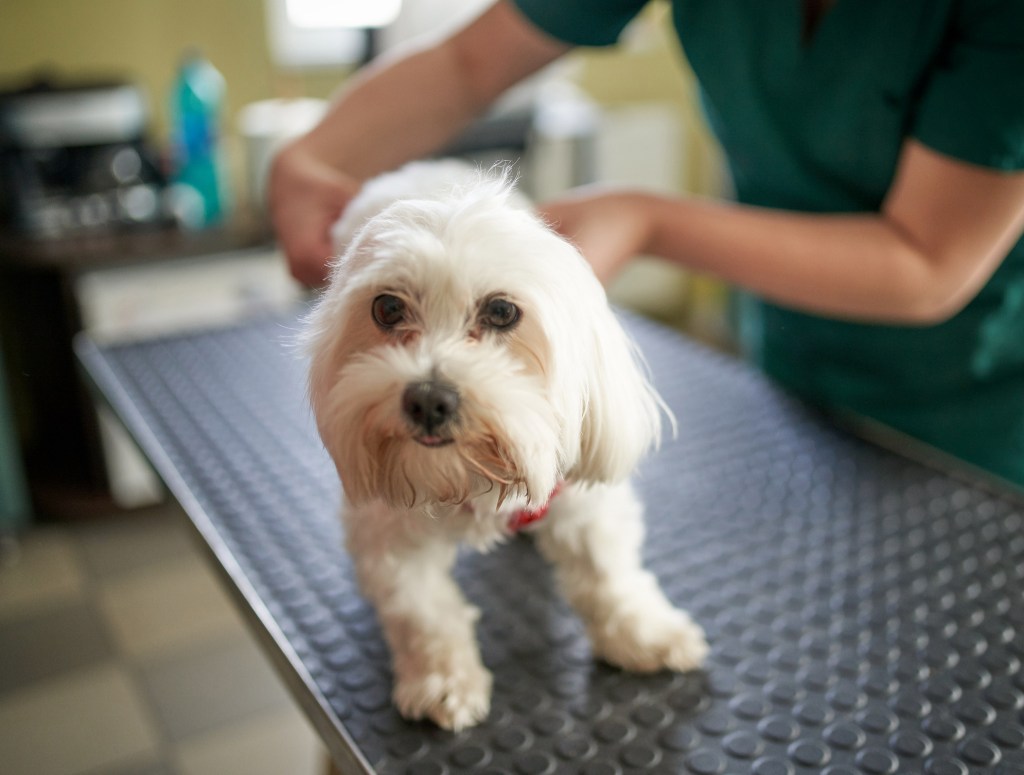Clindamycin is a commonly prescribed broad-spectrum antibiotic for dogs. It is effective in treating various types of bacterial infections. The medication works by inhibiting the synthesis of essential proteins required for bacteria to grow and replicate. This FDA-approved antibiotic medication is available in different forms — including capsules, tablets, and oral liquid suspensions.
Here’s what you should know about the uses, dosage, and side effects of clindamycin for dogs.
Uses of clindamycin for dogs
Clindamycin is primarily used in the treatment of bacterial infections. It is particularly effective against certain strains of bacteria, such as Staphylococcus spp., Streptococcus spp., Clostridium spp., and Bacteroides spp. These bacteria are often responsible for skin, dental, and deep wound infections. Additionally, this antibiotic is proficient in addressing bone infections and osteomyelitis, due to its excellent penetrative properties into bone tissue.
For dental infections, Clindamycin has been a go-to choice for vets, given that oral health issues are a common concern in dogs, particularly in certain breeds prone to dental problems. Moreover, when dogs suffer from deep skin infections like pus-filled wounds or abscesses, Clindamycin can help by tackling the anaerobic bacteria that thrive in these low-oxygen environments.
Clindamycin is also recommended in the treatment of respiratory tract infections. This is especially notable in cases arising from aspiration. It’s also appropriate in instances where the usual mucosal barriers have been compromised. Moreover, it’s not uncommon for Clindamycin to be used as part of a treatment regime for more stubborn or severe infections. In these cases, the drug may be used either alone or in combination with other antibiotics.
Sometimes, your vet might suggest a custom-made version of clindamycin for your dog. This is called a compounded medication. It’s especially helpful if standard FDA-approved drugs aren’t suitable for your pet. For example, this may be the case if your pet struggles with swallowing pills, needs a unique dosage not available on the market, or has allergies to certain ingredients in the regular medication. These tailored medications are crafted by a veterinarian or a licensed pharmacist to meet your pet’s specific health requirements. Keep in mind, compounded medications are not FDA-approved, but they’re made to ensure your pet gets the care they need.
Dosage of clindamycin for dogs

The following is a guideline for the typical use of the drug in dogs. It must not replace your veterinarian’s advice for your individual pet.
As with any medication, the precise dosage of Clindamycin for dogs will depend on the type and severity of infection, the dog’s body weight, and any pre-existing health conditions. Generally, veterinarians follow a standard dosage guideline based on weight, which is usually in the range of 2.5 mg to 15 mg per pound of the dog’s body weight. Typically, this medication is administered every 12 hours.
Dosages can vary, so it’s crucial to give Clindamycin to your dog only according to your vet’s instructions. For mild infections, a vet may prescribe a lower dose; whereas, more severe infections could require a stronger one.
Moreover, Clindamycin for dogs is available in various forms — including oral capsules, liquid suspensions, and injectables — with oral administration being the most common in non-hospital settings.
You can administer this medication with or without food, but avoid giving it as a dry pill. Instead, offer it with a moist treat or a small amount of liquid. This helps to ensure the pill is swallowed properly and reduces discomfort. Notably, if the pill gets stuck in the throat or esophagus, it could lead to ulcers.
That said, it is essential to adhere to the prescribed dosage schedule. Even if your dog begins to show signs of improvement, you must complete the full course of medication to prevent bacterial resistance. If a dose is missed, it’s advised to administer the medication as soon as possible. However, you should not give it too close to the next scheduled dose. Never double up on doses, as overdosing can lead to serious complications.
Side effects of clindamycin for dogs
Although Clindamycin is generally safe and effective, some dogs may experience side effects. Here are some potential side effects to be aware of:
Less commonly, more serious side effects can occur, including changes in liver enzymes, blood disorders, or severe intestinal inflammation. Symptoms of such adverse reactions can be more dramatic, so immediate veterinary care is essential.
One particular side effect of note is the risk of antibiotic-associated colitis, which is an inflammation of the colon. If your dog shows any symptoms indicative of colitis — such as bloody diarrhea or significant abdominal pain — contact your vet immediately.
Given that this medication has a bitter taste, administering it might pose a challenge and could lead to drooling in your pet. Mixing the medication with some food could alleviate this issue and make the process smoother.
Store commercially available liquid and tablet forms of clindamycin at room temperatures between 68-77°F, as specified on the product label. Ensure the container is sealed tightly to safeguard against moisture and light. For compounded medications, follow the storage instructions provided on the compounding pharmacy’s label.
The duration of your dog’s clindamycin treatment will vary based on the type and location of the infection. Superficial skin infections might resolve in a week, while deeper infections, such as those in the bone, may require four weeks or more for treatment.
Clindamycin can interact with medications that block neuromuscular signals like pancuronium, as well as cyclosporine and erythromycin. Additionally, other drug interactions could occur. Therefore, it’s crucial to notify your veterinarian about every medication your dog is presently taking before beginning a course of Clindamycin.
Adblock test (Why?)
Powered by WPeMatico